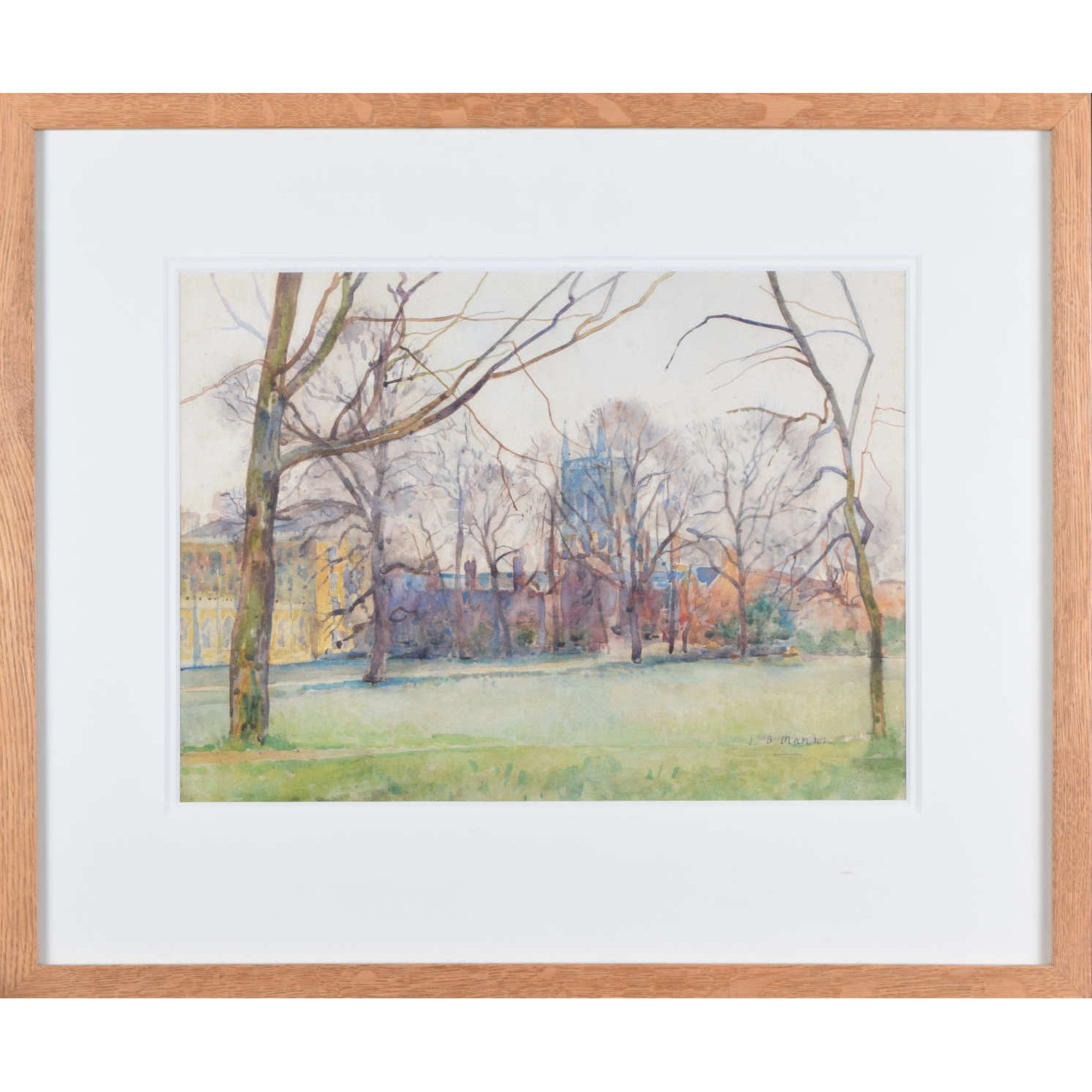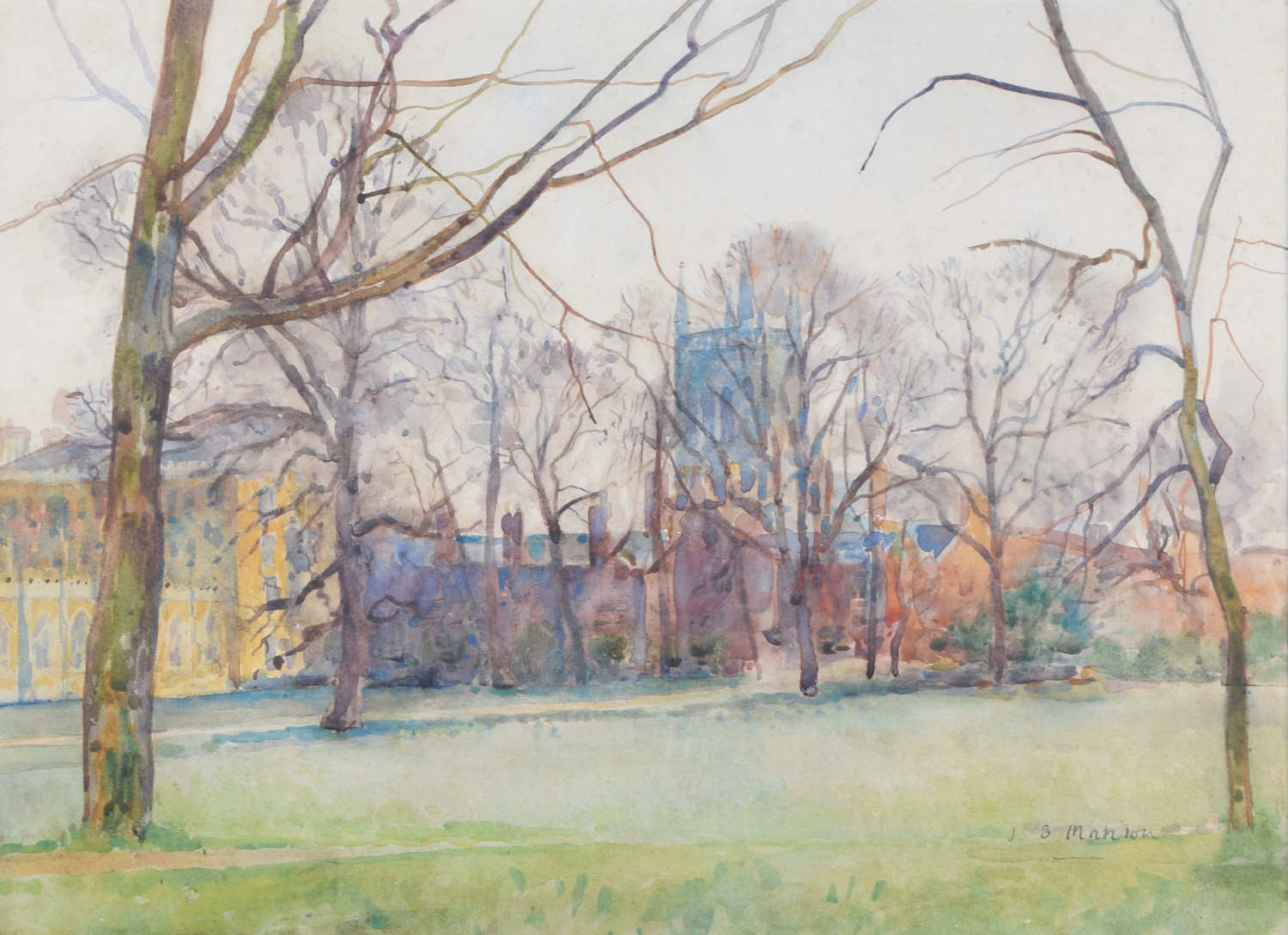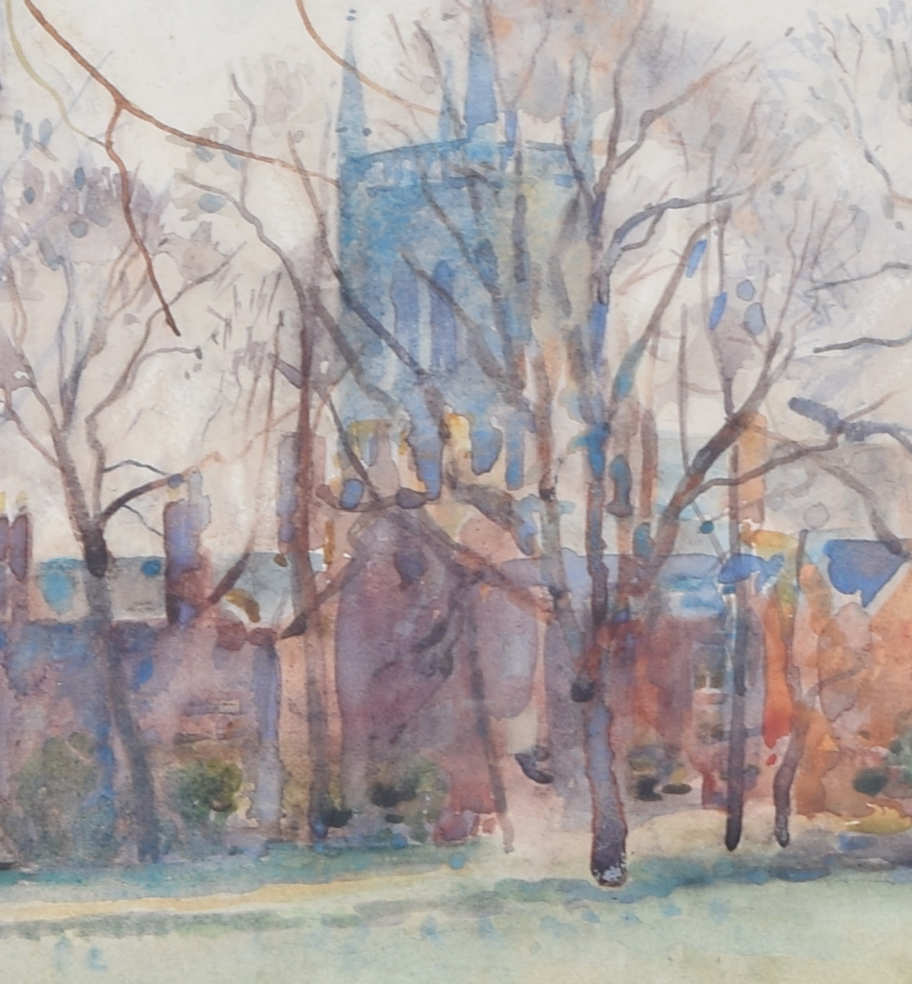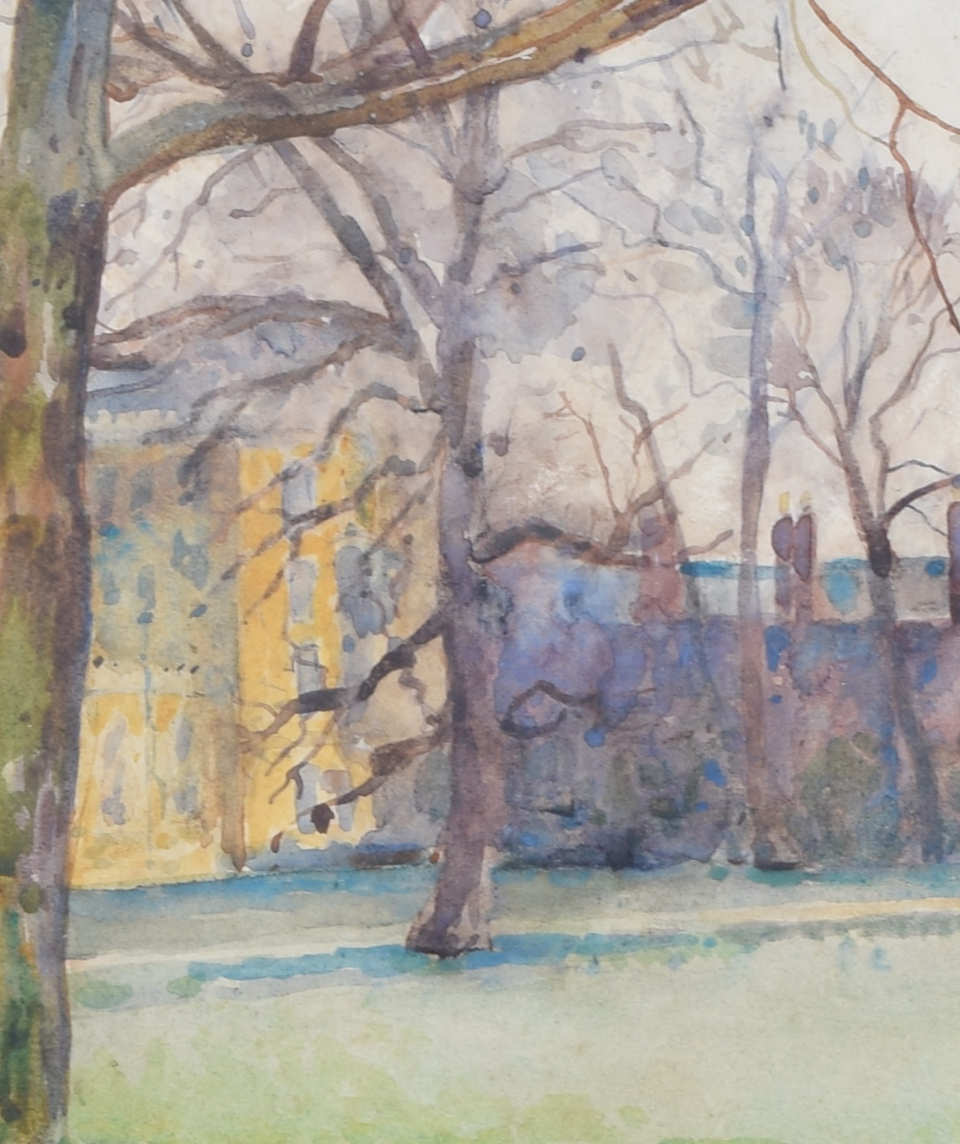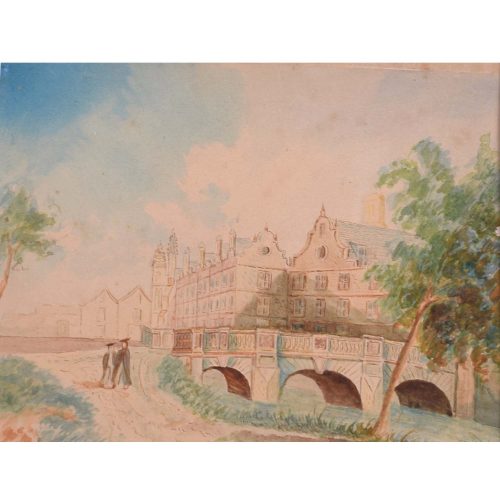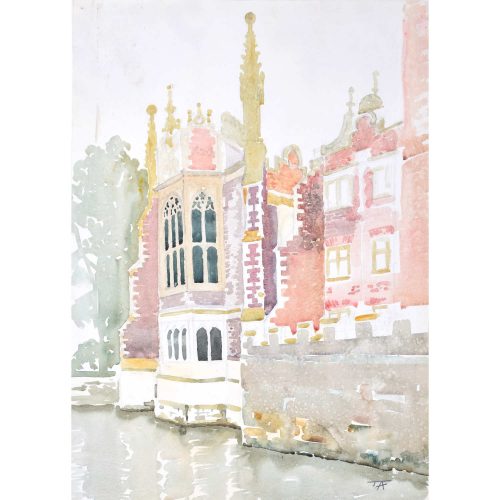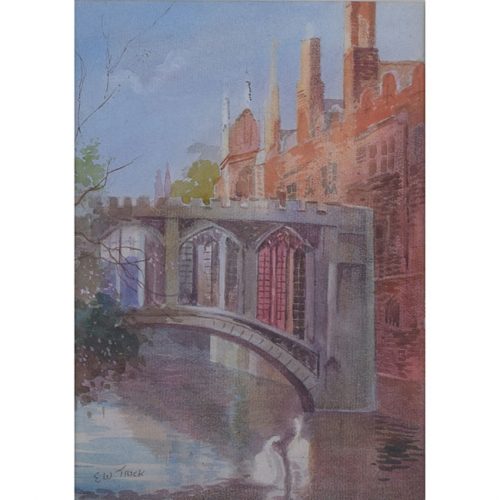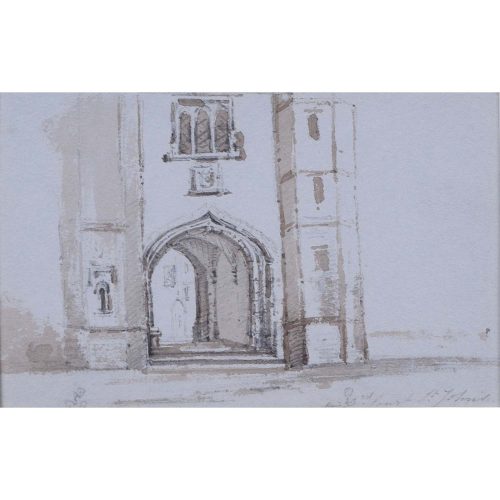James Bolivar Manson (1879 – 1945)
St John’s College, Cambridge
Watercolour
29 x 40 cm
Signed lower right.
A wintry view of St John’s College, Cambridge. The chapel tower nestles behind bare trees, set against a white sky.
Manson was an artist who worked at the Tate Gallery and was its Director from 1930 to 1938. His time there was clouded by his frustrated ambitions as a painter and his descent into alcoholism.
His professional career began as an office boy – leaving Alleyn’s School in Dulwich at 16 – with the publisher George Newnes, and then as a bank clerk. He simultaneously studied painting at Heatherley School of Fine Art, commencing in 1890, and then Lambeth School of Art – much encouraged by Lilian Laugher, a violinist who came to stay in the Manson household. He married her in 1903 – the same year he abandoned his bank job.
They moved to Paris for a year. Manson shared a studio with Jacob Epstein, who became a lifelong friend. When they returned to London, Manson joined the Camden Town Group, becoming Secretary. Lilian was a close friend of the Director of the Tate and ensured that Manson, aged 33, became Tate Clerk. Manson continued to paint feverishly at the weekend. The Tate website describes Manson as its ‘least succesful’ director. Kenneth Clark described him with “a flushed face, white hair and a twinkle in his eye; and this twinkling got him out of scrapes that would have sunk a worthier man without trace.”
His painting continued to show promise, and he joined the London Group in 1914 and showed with the New England Art Club from 1915. His first solo show was at the Leicester Galleries in 1923 and he became a member of the NEAC in 1927.
He attended a dinner at the Hotel George V in Paris in 1938 to celebrate the British Exhibition at the Louvre. Clive Bell wrote to his wife, “Manson arrived at the déjeuner given by the minister of Beaux Arts fantastically drunk – punctuated the ceremony with cat-calls and cock-a-doodle-doos, and finally staggered to his feet, hurled obscene insults at the company in general and the minister in particular, and precipitated himself on the ambassadress, Lady Phipps, some say with amorous intent; others with lethal intent.” Bell concluded: “The guests fled, ices uneaten, coffee undrunk… I hope an example will be made, and that they will seize the opportunity for turning the sot out of the Tate, not because he is a sot, but because he has done nothing but harm to modern painting.”
The Director of the Tate was arbiter as to whether imported items amounted to art (which would make them exempt from customs duty). This caused controversy when Peggy Guggenheim imported sculpture by Marcel Duchamp and others. Manson pronounced Constantin Brâncuși’s Sculpture for the Blind (a large, smooth, egg-shaped marble) to be “idiotic” and “not art”, and therefore subject to duty. Letters were written to the press and the matter reached the House of Commons, where Manson was criticised and eventually had to back down.
He retired at the age of 58. By his own account, “my doctor has warned me that my nerves will not stand any further strain… I have begun to have blackouts, in which my actions become automatic. Sometimes these periods last several hours…. I had one of these blackouts at an official luncheon in Paris recently, and startled guests by suddenly crowing like a cock….”
His successor was Sir John Rothenstein, who discovered that the staff referred to artwork in the basement as ‘Director’s Stock’. It transpired that Manson had been selling it to boost his salary.
His work now hangs in the Tate, as well as in many other galleries in Britain and abroad.
Condition: Good.
If you’d like to know more, please email info@manningfineart.co.uk or call us on 07929 749056.

